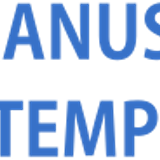Laboratory Studies for The Development of a Demulsifier in Handling Production Fluid Emulsions in The “SRG” Field
Abstract
Keywords
Full Text:
PDFReferences
Dian Kurniasari, Nidia Sauqi (2018). Pengaruh Demulsifier A Dan Demulsifier B Terhadap Crude Oil
Bentayan Dengan Metode Bottle Test Demulsifier.
P-ISSN: 2089-5925, E-ISSN : 2621-9328. 2018.
Halwin Ariandi Siregar (2022). Perancangan Demulsifier Untuk Penanggulangan Emulsi Fluida Produksi
Pada Lapangan “SRG”. Halwin Ariandi Siregar, FTM
UPNYK, 2022.
Hamadi, D. A. S., & Mahmood, L. H. (2009). Demulsifiers for Simulated Basrah Crude Oil. Eng & Tech
Journal, 28(1), 54–64.
Henríquez, C. (2009). W/O Emulsions: Formulation,
Characterization and Destabilization. Retrieved from
http://opus4.kobv.de/opus4-btu/ frontdoor/deliver/
index/docId/471/file/genehmigte_Diss_Morales.pdf,
Implementation of Waterflood in Oilfield, Lemigas
Scientific Contributions Journal, Vol. 33. No. 1,
May 2010: 44 - 51.
Mahdi Rahna Manggala, Sugiatmo Kasmungin,
Kartika Fajarwati (2017). Studi Pengembangan Demulsifier Pada Skala Laboratorium Untuk Mengatasi
Masalah Emulsi Minyak Di Lapangan “Z”, Sumatera
Selatan.
R. Desrina (2012). Effect of Chemicals On The Formation of Tar Balls From Overboard Water Discharges
an Analysis of Environmental View, Scientific Contributions Oil & Gas Journal, Vol. 35. No. 2, August
: 91 – 98.
Tjuwati Makmur (2010). The Advantage of Oil Content
in Injection Water Determination Before.
Yodi (2018). Pemilihan Demulsifier Berdasarkan Bottle
Test Untuk Penanggulangan Emulsi Pada Central
Gathering Station X. Yodi, UIR, 2018.
Yomi Fernando (2012). Formulasi Demulsifier Untuk
Mengoptimalkan Proses Demulsifikasi Heavy Crude
Oil Jatibarang. Yomi Fernando, FMIPA UI, 2012.
DOI: https://doi.org/10.29017/SCOG.45.2.1189

This work is licensed under a Creative Commons Attribution-NonCommercial-NoDerivatives 4.0 International License.






